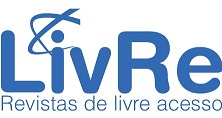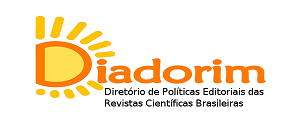MÉTODOS DA GEOGRAFIA FÍSICA AOS ESTUDOS DE GEODIVERSIDADE
uma abordagem Geossistêmica
Keywords:
Geodiversity, Physical geography, GeosystemAbstract
Geodiversity studies rise up as a new research field and work in geological science, although its nuances are incorporated by an interdisciplinary field that encompasses other other sciences, such as geographic science. This paper aims to point out the possible methods and approaches for Physical Geography in the Geodiversity studies. Focusing on the natural aspects that make up the sites of geological and geomorphological interest (geosites and geomorphosites), the geosystemic approach is promising in the direct analysis of the relationship between these sites and the research fields in Physical Geography. In the end, it was noted that all the natural aspects involved in this system composed of geosites and geomorphosites, although primarily made up from geological and geomorphological features, are systematically connected to the other physical components of geography and in order to understand them through correct approaches and methodologies is considered essential to protect them.
References
AZEVEDO, T. R de.; GALVANI, E. Técnicas de Climatologia. In: VENTURI, L. A. B. (Org.). Geografia: práticas de campo, laboratório e sala de aula. São Paulo: Editora Sarandi, 2011. p. 107-134.
BERTALANFFY, L. V. Teoria Geral dos Sistemas. Petrópolis: Vozes, 1973.
BERTRAND, G. Paisagem e geografia física global: esboço metodológico. Caderno de Ciências da Terra, 1971, 13, p. 1-27.
BOLÓS, M. Manual de ciência del paisaje. Teoria, métodos y aplicaciones. Barcelona: Masson, 1992.
BOULDING, K. E. General systems theory: the skeleton of science. Management science, 1956, 2(3), p. 197-208.
BRILHA, J. B. Património geológico e geoconservação: a Conservação da Natureza na sua vertente geológica. Palimage Editores, 2005.
CHRISTOFOLETTI, A. Geomorfologia. São Paulo: Edgar Blücher, 1980.
CHRISTOFOLETTI, A. Modelagem de Sistemas Ambientais. São Paulo. Edgard Blucher, 1999.
CPRM. Serviço Geológico do Brasil - Geodiversidade do Brasil: Conhecer o passado para entender o presente e prever o futuro. Rio de Janeiro: CPRM, 2008.
DEMO, P. Metodologia científica em ciências sociais. 3. ed. São Paulo: Atlas S.A, 1995.
EMPRESA BRASILEIRA DE PESQUISA AGROPECUÁRIA. Sistema brasileiro de classificação de solos. Brasília/DF, 2018.
FEYERABEND, P. Contra o método. Rio de Janeiro: Livraria Francisco Alves Editora S.A., 1975.
FURLAN, S. A. Técnicas de Biogeografia. In: VENTURI, L. A. B. (Org.). Geografia: práticas de campo, laboratório e sala de aula. São Paulo: Editora Sarandi, 2011. p. 135-170.
GRAY, M. Geodiversity: valuing and conserving abiotic nature. Chichester: John Wiley & Sons Ltd, 2004.
HARTMANN, D. L. Global Physical Climatology. London: Elsevier Science, 1994.
KUHN, T. S. A estrutura das revoluções científicas. 5. ed. São Paulo: Perspectiva, 1998.
LEPSCH, I. L. Formação e conservação dos solos. 2. ed. São Paulo: Oficina de Textos, 2010.
MARCONI, M. A; LAKATOS, E. M. Fundamentos de metodologia científica. 5. ed. São Paulo: Atlas S.A, 2003.
MORIN, E. Ciência com Consciência. Rio de Janeiro: Bertrand Brasil, 1982.
OLIVEIRA, D. de. Técnicas de Pedologia. In: VENTURI, L. A. B. (Org.). Geografia: práticas de campo, laboratório e sala de aula. São Paulo: Editora Sarandi, 2011. p. 83-106.
PIROLI, E. L. Geoprocessamento aplicado ao estudo do uso da terra das áreas de preservação permanente dos corpos d ́água da Bacia Hidrográfica do Rio Pardo. 2013. 136 f. Tese (Livre-Docência) – Unidade de Ourinhos, Universidade Estadual Paulista, Ourinhos.
POPPER, K. R.. Conjecturas e Refutações. 4. ed. Brasília: Universidade de Brasília, 1972.
ROSS, L. J. S.; FIERZ, M. de S. M.; VIEIRA, B. C. Técnicas de Geomorfologia. In: VENTURI, L. A. B. (Org.). Geografia: práticas de campo, laboratório e sala de aula. São Paulo: Editora Sarandi, 2011. p. 29-54.
SOTCHAVA, V.B. Introdução à Teoria do Geossistema. Novasibéria: Nauka, 1978.
SUERTEGARAY, D. M. A.; NUNES, J. O. R. A natureza da Geografia Física na Geografia. Revista Terra Livre, 2001, 17(2). São Paulo: Associação dos Geógrafos Brasileiros. p. 11-24.
TRICART, J. Principes et méthodes de Ia geomorphologie. Paris: Masson, 1965.
Downloads
Published
How to Cite
Issue
Section
License
Revista Tocantinense de Geografia does not remunerate any author for the publication of their texts. The contents of the texts published in this journal are the responsibility of the authors.




.png)












